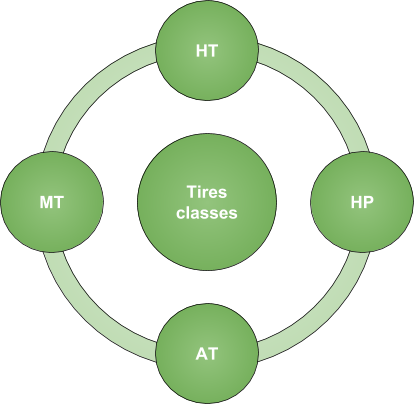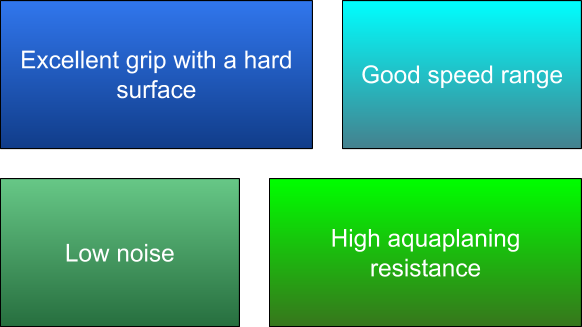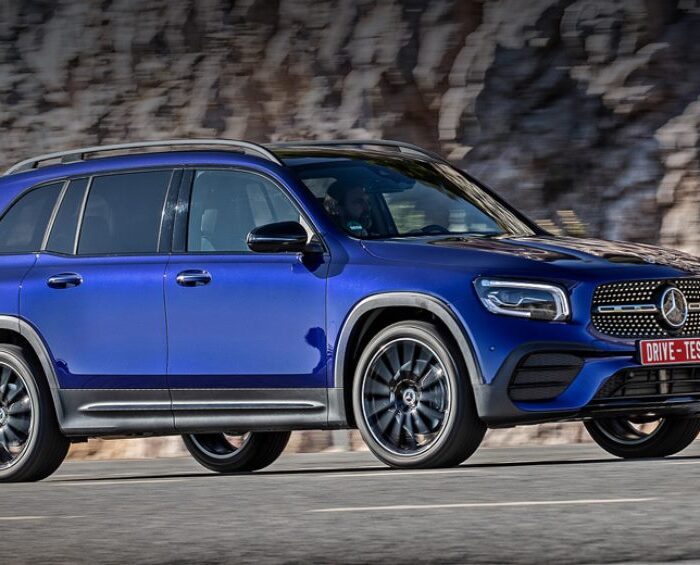SUVs and crossovers need special car “shoes” – they have to move off-road. Therefore, it is necessary to choose not just tires, but special treads that allow for a high profile and high puncture resistance. Let’s figure out what tires for SUVs are and what are the current requirements for them.
Types of tires for SUVs
The correct choice of the type of tires for SUVs influences on traction, handling, stability, off-road capability, a car’s risk of getting stuck while overcoming various kinds of obstacles is reduced.
There are the following types of tires for SUVs:
- Road ones intended for driving on a hard road surface. For their production, a special rubber compound is used that is resistant to abrasive particles of a road surface. A special tread pattern and carcass rigidity are used, providing off-road driving. The softness of the tires provides products’ noiseless while driving on a highway, and the tread – excellent car’s driving performance.
- Off-road (mud) ones, designed for driving on impassable dirt and travelling of vehicles in hard-to-reach places. High off-road capability of a car is provided by a special tread layer capable of squeezing out dirt from the wheels’ contact patch with the road. These tires are resistant to deformation and mechanical damage due to the rubber’s stiffness, as well as the stability of the car tires. At the same time, the tire profile is high, the sidewalls are reinforced – this doesn’t allow driving at high speed and performing extreme maneuvers. According to the design features, off-road tires can be divided into tires to overcome the sand, impassable dirt, rocky terrain. For each option, a special tread is used, differing in height, grooves thickness and rubber stiffness.
- Universal tires, applicable on road and off-road. The specified type of tires differs from road ones by a large tread pattern and greater rubber stiffness. These tires make it possible to drive on a sandy surface and dirt. The car, “wearing” universal tires, has a good passing ability.
Jeep tires classes
Automobile tires for SUVs are marked according to four main classes:

The class of HT (Half Terrain) includes tires for universal purpose. They can be used in conditions of driving on asphalt pavement, and when driving on dirt roads. Such a tire has standard tread pattern, allowing you to move safely at speeds of up to 180 km/h.
NT is characterized by tread’s low noise, excellent grip and good rolling.
HP (High Performanse) are premium tires. The pattern is often asymmetrical, allowing to accelerate to 210 km/h. However, the cost of these treads is high, although it is justified by the excellent performance characteristics:

AT is an option more suitable for off-road, although not bad for asphalt road. Basically it is 50×50 tires that have a reliable grip.
MT is a tire that makes a lot of noise and wears quickly on hard surfaces. But the ability to pass sandstone, clay off-road is excellent, as the tread has large lugs, deep and wide grooves. The “toothy” MT class tires are not adapted to asphalt, especially ones with tractor tread (a lot of noise and vibration). MT isn’t universal, and there is also a risk of such rubber’s cuts on sharp stones, despite all its elasticity.
In addition, tires for SUVs are divided into winter, summer and all-season.
Some tips
When choosing tires for a SUV (and any other car), you need to consider the following parameters:
– seasonality;
– type of tread;
– type of tire construction – tubed or tubeless;
– type of cord construction;
– mounting diameter (or one at rim seat);
– tire width;
– section height;
– load index;
– speed index.
We will describe the last two parameters in more detail.
Load index is a parameter reflecting the maximum permissible load on a tire during its operation. It is indicated by a digital index after geometrical parameters of a tire: for example, our imaginary 185/70 R14 88H tire has a load index of 88. The index can be seen in the table provided by the tire manufacturer – in our case, the index 88 means the permissible load of 560 kilograms. When choosing tires, it should be borne in mind that the maximum permissible mass of a car, accordingly, shouldn’t exceed the maximum load multiplied by 4 – the number of car’s tires.
Speed index is a parameter reflecting the maximum allowable speed at which the tire retains its performance characteristics. This is an alphabetic index, the interpretation of which also needs to be specified in the table given by the manufacturer. Tires of the same diameter can have a different speed index depending on other parameters – width, section, rubber compound composition and, accordingly, price. If the parameter of maximum allowable speed of operation is important for you, you need to choose tires of a high price category with the best consumer qualities.
The main rules for choosing “shoes” for any car, including SUVs, are:
- Use only the dimensions specified in the user manual.
- Saving on all-season tires is permissible only in a warm climate. Winter tires are much better than universal ones. Studded tires are good in conditions of constant snow and ice on asphalt.
- The quality of Russian tires has improved significantly in recent years and is rarely inferior to foreign analogues now.
And finally, the most important thing: any tires strictly require proper operation and care. Constantly monitor the pressure level, balance, as well as toe-in toe-out and other vehicle chassis parameters. Only in this case, tires will last a long time, and driving will be truly safe and comfortable. Make a right choice and have safe journeys!

Don’t forget about driving license. If you don’t have an international driver’s license, you can easily and quickly process it on our website. With an international driver’s license, you can drive not only a SUV, but any car.

Published February 22, 2019 • 5m to read






